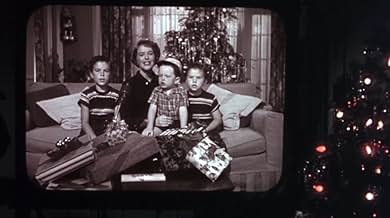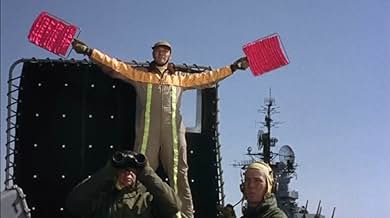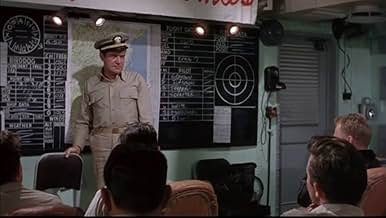Un écrivain célèbre visite un porte-avions pendant la guerre de Corée pour en savoir plus à son sujet et sur son fonctionnement. Il apprend également sur les aviateurs de la Marine et de la ... Tout lireUn écrivain célèbre visite un porte-avions pendant la guerre de Corée pour en savoir plus à son sujet et sur son fonctionnement. Il apprend également sur les aviateurs de la Marine et de la Marine elle-même.Un écrivain célèbre visite un porte-avions pendant la guerre de Corée pour en savoir plus à son sujet et sur son fonctionnement. Il apprend également sur les aviateurs de la Marine et de la Marine elle-même.
- Réalisation
- Scénario
- Casting principal
- Mary, Schechter's Fiancee
- (non crédité)
- Officer
- (non crédité)
- Home Movie Commentator
- (non crédité)
- Andy Szymanski Jr.
- (non crédité)
- Replacement
- (non crédité)
- Richard Dodson
- (non crédité)
- Soldier
- (non crédité)
Avis à la une
Released a year after the war, this is adapted from a magazine story by Michener. The use of the real thing and some real footage helps heighten the intensity. Seeing the real thing is fascinating even all these years later. Seeing the real bombing runs must have been compelling back in the day. I do remember the plane explosive crash on the carrier deck from somewhere else. I wonder if this is where it came from. Otherwise, the story is simple and the characters don't really stand out. These are good character actors and they do a solid job. As for the climatic story, it's just not that dramatic. The drama is concentrated on the landing and it's not that in doubt.
The story is about a group of fighter-bomber pilots flying Panther jets from a US aircraft carrier. What happened to the men is described to Michener (Louis Calhern) by the ship's doctor (Walter Pidgeon)....a story about the pilots flying interdiction missions over Korea. The part of the story that is longest and most interesting is a true story of a pilot hit by shrapnel. The plan is badly damaged, he is blinded and he cannot eject...and another pilot trails him and talks him down onto the carrier deck!
The story is interesting and the acting quite good. But like too many war films, it's filled with lot of grainy stock footage that obviously doesn't fit. What's worse, occasionally it's VERY sloppy...such as when a dark blue Panther jet becomes a silver F-84 fighter plane! Another time, during a bombing run, a Panther becomes a WWII era propeller fighter, the F4U Corsair*! This is not only sloppy but insults the audience's intelligence.
Overall, worth seeing...despite the sloppy footage issue.
* To folks who know a ton about planes, yes I know that the F4U Corsair was also used in Korea....but a propeller fighter becoming a jet fighter...that's just stupid and obvious.
Le saviez-vous
- AnecdotesF9F Panther jets from US Navy squadron VF-192 were also used to film Les ponts de Toko-Ri (1954). After the filming of these two movies, the squadron name was changed from "Golden Dragons" to "World Famous Golden Dragons".
- GaffesDuring the emergency landing sequence, when the plane is shown landing and being stopped by the barrier, the nose gear collapses and the nose cone crumples. In the next shot, the plane is still in the barrier, but the nose gear is extended and the nose cone is not crumpled.
- Citations
Comdr. Kent Dowling: [Greeting visiting author James Michener] You know, until I read your book "Tales of the South Pacific", I didn't know what a wonderful time I had in World War Two.
James A. Michener: Neither did I until Rodgers and Hammerstein set it to music.
Comdr. Kent Dowling: Why didn't you stop while you were ahead? Even Shakespeare couldn't make this dirty little war romantic.
- ConnexionsFeatured in La bataille de Midway (1976)
Meilleurs choix
Détails
Box-office
- Budget
- 829 000 $US (estimé)
- Durée1 heure 19 minutes
- Rapport de forme
- 1.75 : 1


































